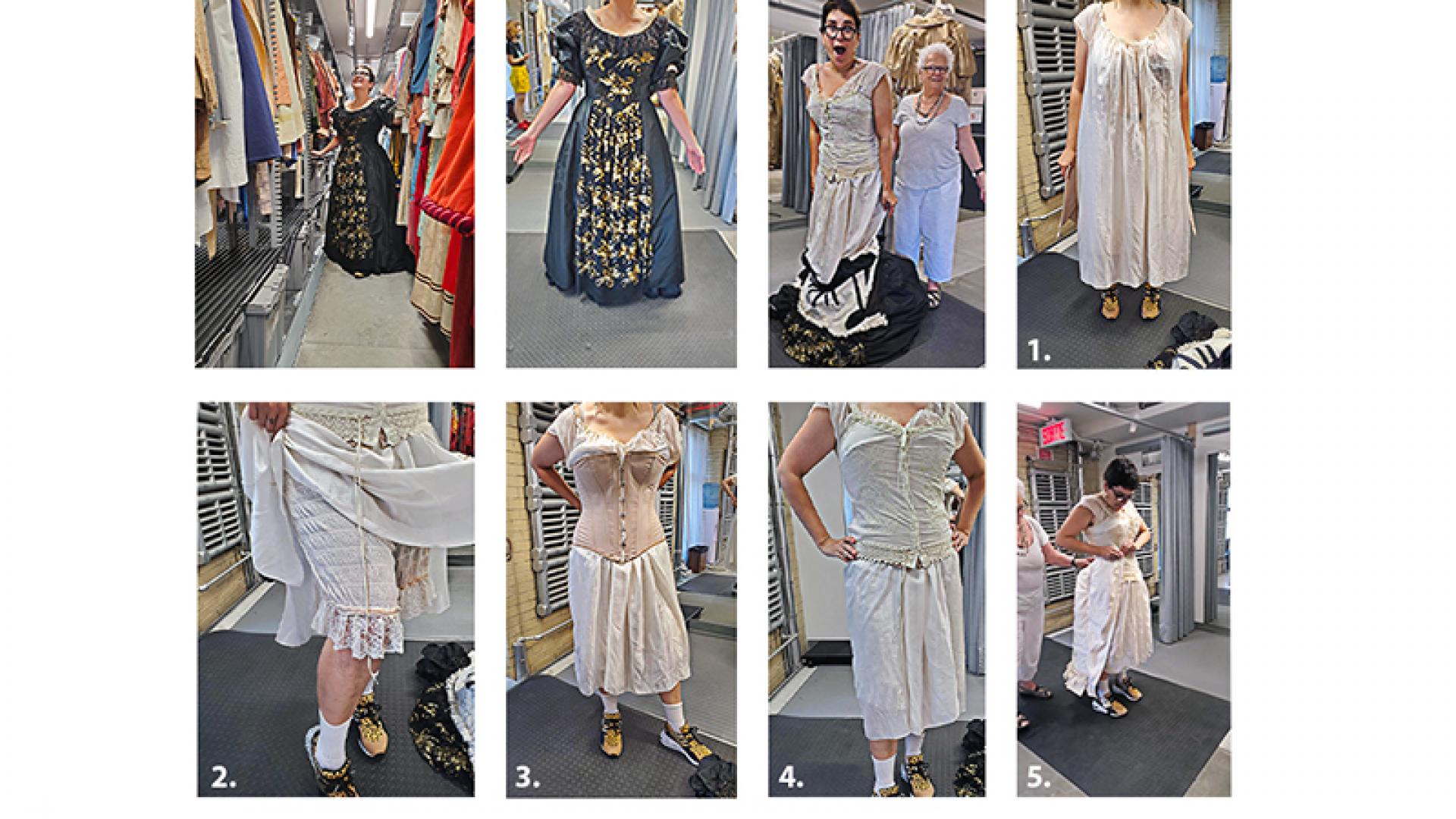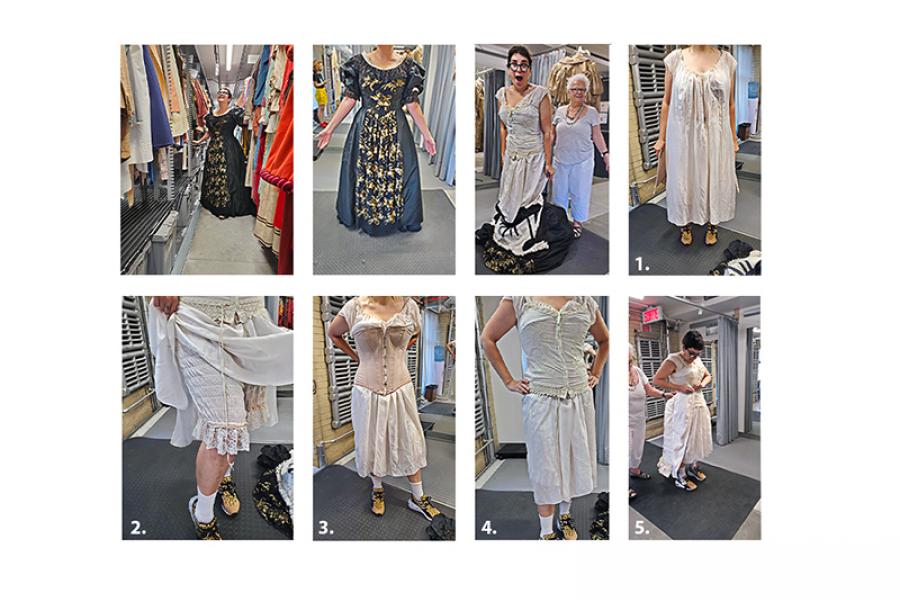Victorian era: The importance of underwear to create a real look !

The gorgeous clothes of the Victorian era have captured our imaginations due to their elegance and incredible detail. However, we often forget the important role that undergarments played in creating the period’s characteristic silhouettes. Drawing on our costumers’ expertise, we’ve created a brief overview of each type of underwear that contributed to the exceptional styles of the Victorian era.
Underwear has been worn by both men and women since the Late Middle Ages (1450). At first, this simply consisted of a chemise (or shift) for both genders. It was worn directly against the skin and was made of more or less finely woven linen. For men, this undergarment was long enough for them to tuck it between their thighs to protect their pants. The length of women’s chemises varied: for the less well-off, it doubled as a petticoat. The chemise’s primary purpose was to protect clothing from perspiration. Humble folk often only owned one chemise. The bourgeoisie and lesser nobility, who owned clothing made of wool or silk, which were difficult to clean, owned more chemises, which were washed regularly. Those with lesser means only washed theirs once or twice a year. Aristocrats on the other hand could change their chemise several times a day. In 1885, at the end of the Victorian era, undergarments had become more complex and specialized, but still had the same basic function of protecting clothing. In women, they also served to create the latest fashionable silhouettes. Lace collars and cuffs were always removable to allow for separate washing.
1. Chemise (or shift): In the Victorian era, it was made of fine fabric such as linen, cotton or silk, and was often embroidered or decorated with lace.
2. Pantalets (or bloomers or drawers): These appeared with the advent of crinolines. They were designed to protect a woman’s modesty if she fell and her skirt came up. However, pantalets were often completely open between the legs so women wouldn’t have to pull them down once they were corseted and dressed.
3. Corset (or stay): During the Victorian era, corsets were short, made of whalebone and highly cinched. Their purpose was to sculpt the woman’s waist and highlight her chest by pushing it up. In this era, corsets had a busk or spoon busk for support and an opening in the front, which allowed women to dress themselves, without assistance. Corsets were always laced up in the back.
4. Corset cover: Often decorated with lace, the corset cover appeared during Victorian times. It protected the corset, since washing it was delicate work that required a long drying time. The cover also kept the corset from damaging the bodice or dress.
5. Bustle: The bustle is typical of this era and was made of cotton and metal strips.
6. Petticoat: Its role was to add the fullness of a dress. When necessary, a separate coloured petticoat was worn to add a layer of modesty to transparent clothing.



